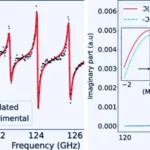In a groundbreaking development that promises to revolutionize our understanding of the brain, scientists have uncovered a previously unknown brain cell with the potential to reshape the field of neuroscience. This newly-discovered hybrid brain cell defies conventional categorizations, blurring the lines between two well-established brain cell types: neurons and glial cells.
Redefining Brain Complexity
Traditionally, neurons have been recognized as the primary conductors of electrical signals within the brain, facilitating communication between different regions. In contrast, glial cells were believed to provide structural support and insulation for neurons primarily.
The discovery of these hybrid brain cells has sent shockwaves through the scientific community, challenging the classical understanding of brain cell types and their functions. It suggests that the human brain may possess a level of complexity and diversity that was previously unimaginable.
Unlocking New Horizons
This extraordinary revelation was made possible through cutting-edge precision technology that enables scientists to map the gene expression profiles of individual brain cells. By scrutinizing these profiles, researchers could differentiate the hybrid brain cells from conventional neurons and glial cells.
While the full implications of this discovery are still unfolding, it holds immense promise for advancing our comprehension of brain function and unlocking new insights into neurological disorders. This breakthrough could pave the way for innovative therapeutic approaches that were previously unthinkable.
Beyond Traditional Boundaries
One of the most profound aspects of this discovery is its challenge to the long-standing belief that brain cells could be neatly categorized into distinct types. Instead, it suggests a tapestry of intricacies and diversities within the brain that demand further exploration.
To comprehensively understand these hybrid cells’ role in the brain, scientists will undertake extensive research to uncover their functions, interactions with other cell types, and potential links to neurological disorders. This discovery represents a new frontier in brain research, offering exciting prospects for scientific breakthroughs that could redefine our knowledge of the brain.
Conclusion
The recent identification of hybrid brain cells is poised to disrupt the field of neuroscience, fundamentally altering our perceptions of brain cell types and their functions. It underscores the astonishing complexity and diversity within the human brain and opens the door to exciting new avenues of research with far-reaching implications. As scientists delve deeper into the mysteries of these hybrid brain cells, we may be on the verge of a paradigm shift in our understanding of the brain and its disorders.











